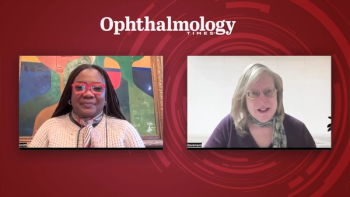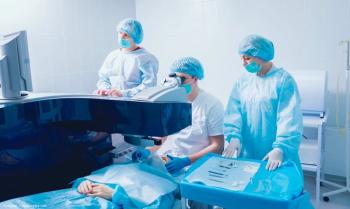
University of Illinois program marks 150 years
Today, 150 years later, what has come to be known as the University of Illinois Eye & Ear Infirmary continues to strive for excellence in medical education, care and treatment of patients, and cutting-edge research.
Key Points
In 1858, just 8 years after the invention of the first ophthalmoscope, a young doctor-fresh from Harvard Medical School and several European eye clinics-started a small, philanthropic venture in Chicago to treat diseases of the eyes and ears.
Within just 20 years, the one-room practice, known originally as the Chicago Charitable Eye and Ear Infirmary, became one of the nation's premier medical institutions and helped transform the way eye diseases were treated.
The department ranks high among its peers for the amount of funding awarded from the National Institutes of Health (NIH), and many faculty members are pursuing research in important areas, such as retina bypass using nanotechnology, as well as sophisticated imaging studies to measure the amount of oxygen tension in the retina.
"I couldn't be more proud," said Dr. Azar, who joined the department nearly 3 years ago. "This is a unique opportunity for me to come here and grow the department, which has a really outstanding tradition of excellence and innovation in ophthalmology, and use that strong foundation to jump-start the department in a direction where we can have a large number of educational, research, and clinical programs and centers of excellence."
Growing in excellence
The infirmary had its humble beginnings in 1858 in a single room of a frame building when Edward L. Holmes, MD, convinced Chicago philanthropists and physicians to join him in creating a charitable infirmary for the treatment of eye and ear diseases. The first patient who needed overnight care slept on a blanket on the floor for 2 nights. That year, doctors treated 95 eye patients (only one of these was a cataract case; most were related to infection), and 20 ear patients.
Paying patients were admitted until 1883, but the program existed primarily to treat the indigent population during the economic depression of the pre-Civil War era, according to a history on the department's Web site.
In 1870, however, the Illinois state legislature forbade state money to be paid to a private institution, and the hospital came under state ownership, when the name changed to the "Illinois Charitable Eye and Ear Infirmary." Unfortunately, the great fire that swept through Chicago the following year also destroyed the infirmary, but not before every patient was rescued.
In the rebuilding effort, the infirmary constructed a "fireproof structure of brick and limestone," according to the history, and Rush Medical College and Cook County Hospital both opted to build in the same area, creating what would one day be called the Medical Center District.
Newsletter
Don’t miss out—get Ophthalmology Times updates on the latest clinical advancements and expert interviews, straight to your inbox.













































